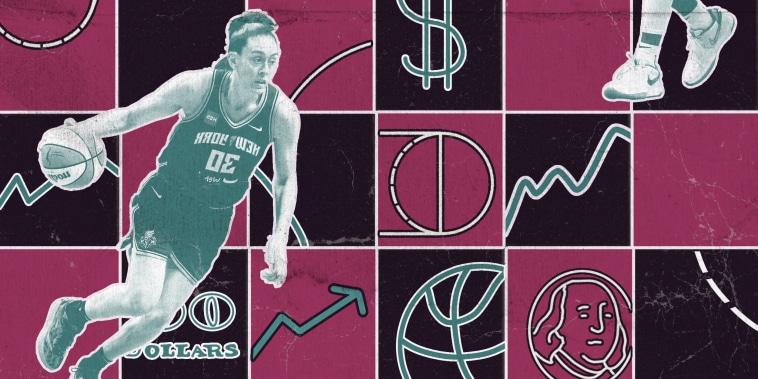The professional sports industry, with all its glitz and glamour, often hides a stark disparity that exists between the genders. A clear example of this is Caitlin Clark’s pro salary, which exposes an undeniable economic reality distinguishing the Women’s National Basketball Association (WNBA) and National Basketball Association (NBA).
Caitlin Clark, a distinguished basketball player with a phenomenal record in college basketball, has been a shining beacon for the sport. Her impressive athletic prowess has drawn comparisons with some of the greatest NBA players. Despite her undeniable talent, the salary she commands in the WNBA is a fraction of her male counterparts in the NBA. A cursory glance at the figures provides a clear indication of this pay disparity. As per the 2020 collective bargaining agreement, the maximum salary a WNBA player can earn is $221,450, while an NBA player minimum salary starts at $898,310 for the 2021-2022 season – that’s over four times more.
The financial gap between the NBA and WNBA is a consequence of numerous factors, far more complex than a simple difference in fan interest or sexism. One significant element is the difference in revenue generated by the two leagues. The NBA has a much larger fanbase, which subsequently means higher TV ratings, more merchandise sales, and increased overall income. However, it’s essential to note that one reason the WNBA’s revenue is lower is because, compared to the NBA’s decades-long existence, the WNBA is relatively younger (first season in 1997) and has had less time to build a comparable fanbase.
The unequal pay between the NBA and WNBA also reflects different marketing strategies. The NBA has consistently pushed its stars into the limelight, gluing spectators’ attention to the league. In contrast, promotion of WNBA players often falls short, with less investment in marketing campaigns. This disparate promotion can affect public interest and consequently, revenue generation and players’ salaries.
Another element contributing to this economic disparity is the broadcast media coverage the two leagues receive. WNBA gets significantly smaller TV deals than its male counterpart. In 2016, ESPN extended its broadcast deal with the WNBA for ten years for $25 million per year, a mere fraction of the NBA’s deal with ESPN and Turner Sports, which totals $2.66 billion per year, beginning in the 2016-2017 season.
Finally, it’s also essential to understand that the WNBA pays its players a higher portion of the league’s revenue compared to the NBA. According to the collective bargaining agreement from the 2020 season, WNBA players receive around 50% of the league’s revenue, a jump from the previous 20-30% range. Meanwhile, the NBA players receive approximately 50% of the league’s revenue.
Caitlin Clark’s salary presents the harsh economic reality that exists in professional basketball. Despite the skill, determination, and heart that WNBA players bring to the court, the revenues, marketing efforts, and media coverage have not reached a stage where they can command salaries equivalent to their male counterparts.
Despite this substantial pay gap, an encouraging trend is on the horizon. The rise of female athlete-driven sports companies, the increase in social media presence, and grassroots efforts all contribute to the progress in bridging the gap in the recent years. Additionally, the sports industry is slowly but surely recognizing the value women players bring to the table, setting the stage for the eventual economic parity. The story of Caitlin Clark’s pro salary, while exposing a deep-seated issue, also invites us to be a part of the journey towards improvement, progress, and eventual equity.




